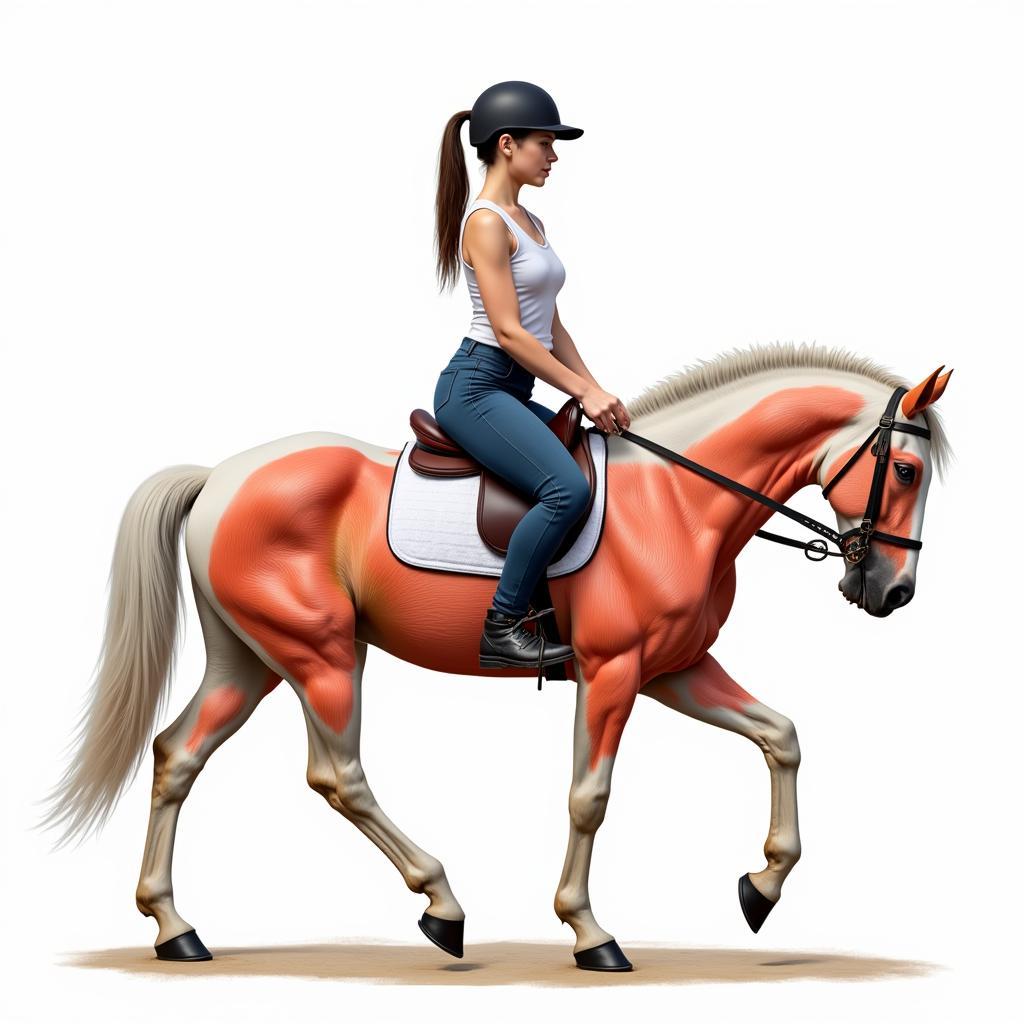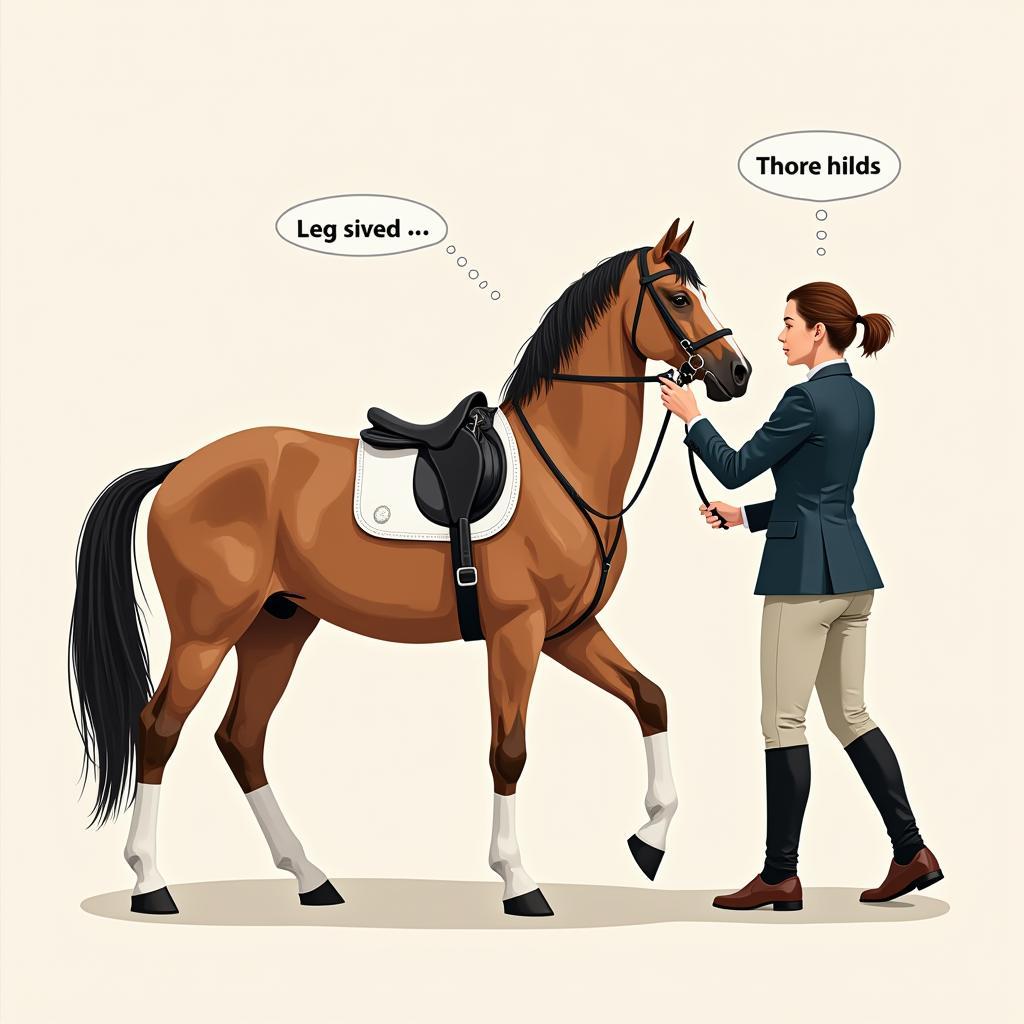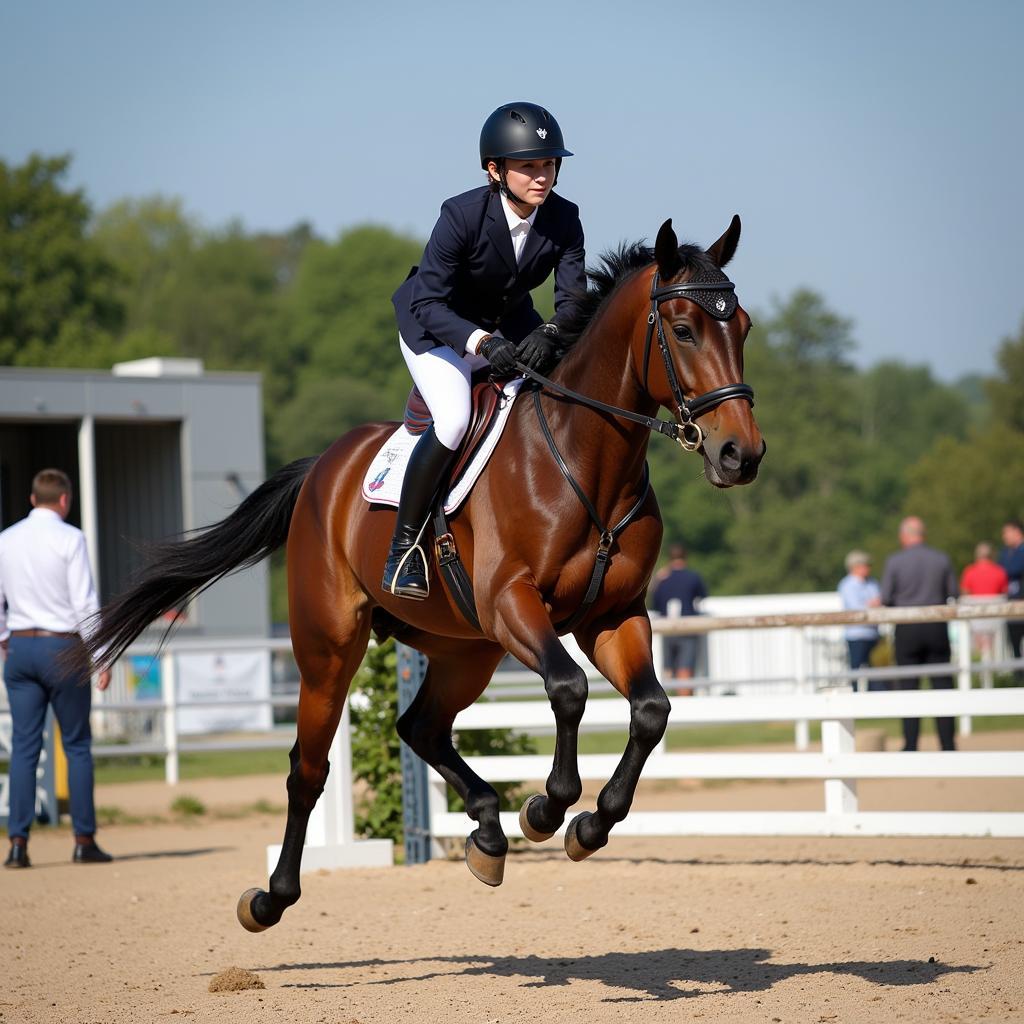Horse riding is a sport that demands physical and mental prowess from both horse and rider. It’s not just about sitting on a horse; it requires dedication, strength, and a deep understanding of equine behavior. From the subtle cues of dressage to the thrilling jumps of show jumping, horse riding engages a unique set of skills that solidify its position as a true sport. Learn more about why horse riding deserves its recognition as an athletic endeavor.
The Athleticism of Horse Riding: More Than Just a Hobby
Many people mistakenly believe that the horse does all the work. However, effective horse riding necessitates significant physical exertion from the rider. Maintaining balance, controlling the horse’s movements, and executing precise maneuvers require core strength, leg power, and excellent coordination. Imagine holding a squat while simultaneously guiding a powerful animal – that’s just a glimpse into the physical demands of riding. And don’t forget the mental focus required to strategize and react quickly to the horse’s actions!  Horse Rider Demonstrating Muscle Engagement
Horse Rider Demonstrating Muscle Engagement
Furthermore, different disciplines within horse riding emphasize various athletic skills. Dressage, often compared to ballet on horseback, demands incredible precision and control, showcasing the horse’s grace and the rider’s subtle influence. Show jumping necessitates explosive power and precise timing as horse and rider navigate a challenging course of obstacles. Even trail riding, while seemingly more leisurely, requires stamina and balance to navigate varied terrain. Each discipline challenges both horse and rider in unique ways, further solidifying horse riding as a true sport.
Is Horseback Riding Really a Sport? The Competitive Edge
The competitive nature of horse riding further reinforces its status as a sport. Just like any other sport, horse riding has structured competitions, judging criteria, and rankings. Riders train rigorously, honing their skills and pushing their limits to achieve peak performance. From local shows to international championships, the pursuit of excellence drives riders to continually improve. horse socks The pressure of competition, the thrill of victory, and the lessons learned in defeat are all hallmarks of the sporting experience. Whether it’s the elegance of dressage or the speed of barrel racing, the competitive element adds another layer to the athleticism of horse riding.
The Skill and Strategy Behind Equestrian Sports
Horse riding is not simply about physical ability; it also requires a high degree of skill and strategic thinking. Understanding equine behavior, anticipating the horse’s movements, and communicating effectively through subtle cues are essential components of successful riding.  Horse and Rider Communication in Dressage Just like a coach plans a game strategy, a rider must develop a plan for navigating a course, executing a dressage test, or managing their horse’s energy throughout a competition. This mental aspect of horse riding is often overlooked, but it is crucial for achieving success in the sport.
Horse and Rider Communication in Dressage Just like a coach plans a game strategy, a rider must develop a plan for navigating a course, executing a dressage test, or managing their horse’s energy throughout a competition. This mental aspect of horse riding is often overlooked, but it is crucial for achieving success in the sport.
The Physical Demands: Why Horseback Riding is a Workout
Beyond the technical skills and strategy, horse riding provides a significant physical workout. It engages muscles throughout the body, improving core strength, balance, and coordination. The constant adjustments required to maintain posture and control the horse’s movement build strength and endurance. fly wraps for horses Riders often experience improved posture, increased flexibility, and enhanced cardiovascular health. The physical benefits of horse riding extend beyond the saddle, contributing to overall fitness and well-being.
Why is Horse Riding Considered a Sport? A Holistic Perspective
Horse riding is a sport because it combines physical prowess, technical skill, strategic thinking, and a deep connection with an animal partner. The dedication required to train, compete, and care for a horse mirrors the commitment seen in other athletic pursuits. It’s a demanding and rewarding activity that challenges individuals on multiple levels.  Equestrian Athlete in Competition The bond between horse and rider adds a unique dimension to the sport, fostering teamwork, trust, and mutual respect. This partnership distinguishes horse riding from many other sports, highlighting the interconnectedness between athlete and animal.
Equestrian Athlete in Competition The bond between horse and rider adds a unique dimension to the sport, fostering teamwork, trust, and mutual respect. This partnership distinguishes horse riding from many other sports, highlighting the interconnectedness between athlete and animal.
Conclusion: Why Horse Riding Earns Its Place as a Sport
From the physical demands to the intricate communication between horse and rider, horse riding is undoubtedly a sport. It’s a challenging and rewarding activity that demands dedication, skill, and a deep understanding of equine behavior. Whether you’re a seasoned competitor or a recreational rider, the athleticism of horse riding is undeniable. So next time you see a horse and rider in action, remember the skill, strength, and strategy behind this dynamic sport.
FAQ
- What muscles does horse riding work? Horse riding engages core, leg, back, and arm muscles.
- Is horse riding good exercise? Yes, horse riding provides a significant cardiovascular and strength-training workout.
- What are the different disciplines in horse riding? Disciplines include dressage, show jumping, eventing, barrel racing, and more.
- What skills are needed for horse riding? Balance, coordination, strength, and communication skills are essential.
- How can I start learning to ride? Look for reputable riding schools in your area.
- What equipment do I need for horse riding? Essential equipment includes a helmet, riding boots, and comfortable breeches.
- Is horse riding dangerous? Like any sport, there are inherent risks, but proper training and safety precautions can minimize them.
Need Help with Your Horse?
For any assistance with your equine companion, from pick up horse manure to finding the perfect horse bit box, contact us!
Call: 0772127271
Email: [email protected]
Visit: QGM2+WX2, Vị Trung, Vị Thuỷ, Hậu Giang, Việt Nam. We have a 24/7 customer service team.